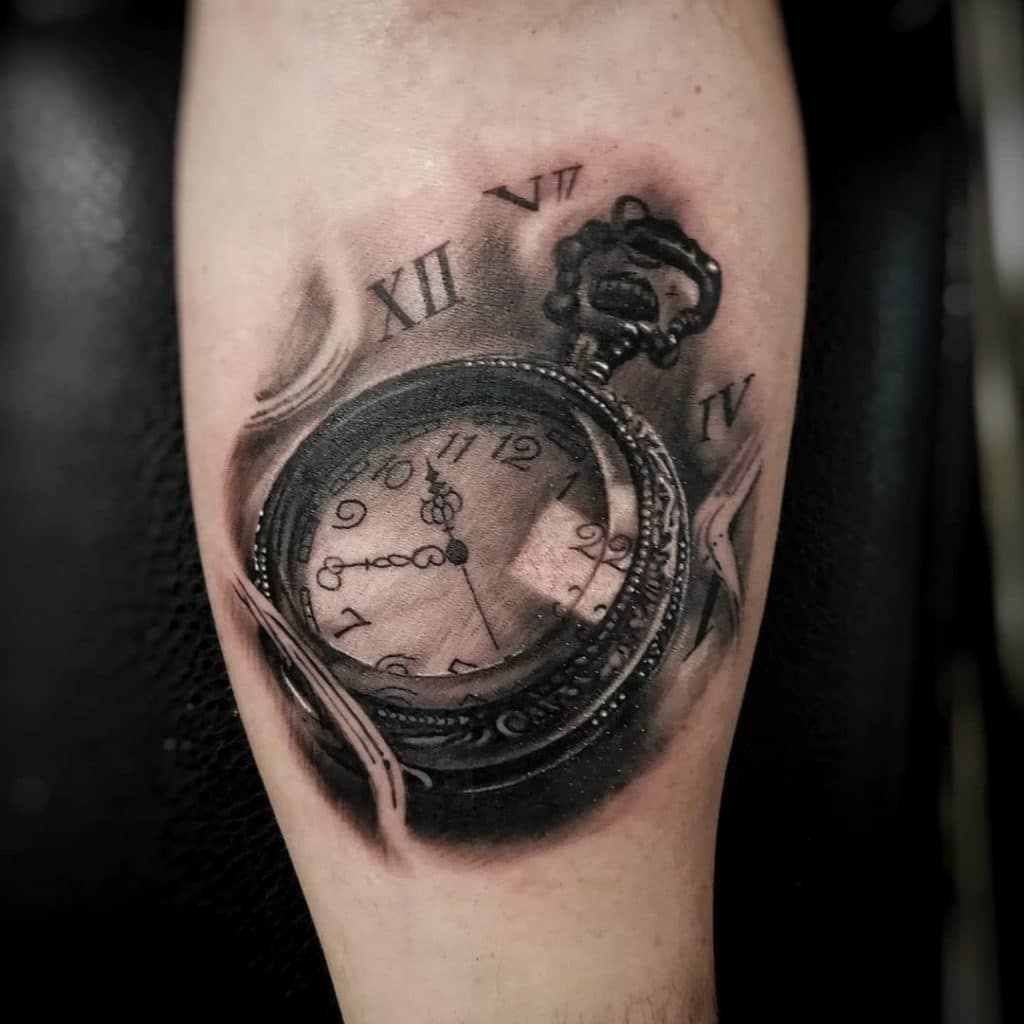
It can also be a representation of technology and the changing and passing of time. Gears and cogs are often a symbol for the mind and its complex processes and they may be used as a representation of intelligence. Some pocket watch designs show the gears of the clock and represent the inner workings of the individual.
Pocket watch tattoo design code#
Punctuality is a sign of respect, another code of the gentleman. The pocket watch can delineate loyalty to time as well and symbolize a punctual person. After the eighteenth century, they became ubiquitous, and many different types were made to suit various classes and occupations. For centuries, the time piece, eventually the pocket watch, conveyed social status or significance until it become easier to manufacture them. The pocket watch, in a more gender specific period, was the symbol of a gentleman. The broken, cracked, or even exploding pocket watch indicates a disregard for time or a shattering of the individual’s perception, emphasizing a time in their life of great change.Īlternatively, the pocket watch can be a symbol of a loyalty to a previous time, before modern technology. Keeping with this theme, the watch may be distorted or warped in some way or it can be broken. This design reveals an alternate perception of time, or an individual who is not bound by the limitations of space and time.

This is a representation of madness or chaos, a place where time is not linear or exact. Rather, the numerals can circle the pocket watch or be placed haphazardly around the design. The numbers on the clock may be included in the design but not placed on the clock face. Religious symbols, initials, or words or phrases may be featured on the front of the watch when the clock face does not appear. An emblem or other symbol can be included and made to appear etched into the cover of the pocket watch, revealing only a small part of the individual rather than the entire face. The missing watch face can also indicate a hidden personality, one that has to be opened to be viewed. A golden pocket watch can represent the value of one’s own life, a gift in itself. Gold is an obvious symbol of importance or wealth, a richness that is not necessarily monetary. If the watch face is not visible, the significance of the image can be found in the material of which the watch is made. It can serve as a tribute or memorial tattoo in this way, indicating a time of birth or death or the lack of hands can represent the great sense of loss that is felt by a loved one’s death.

The time could portray any important situation that has occurred, or there could be an absence of hands, denoting a disregard for the passage of time. Traditionally, roman numerals are used, harkening back to the original time keeper, the sundial. More so, the numerals that appear say something as well. If the face of the watch is visible, the time displayed becomes significant to the meaning of the image. In some designs the watch includes a rabbit emblem to designate the white rabbit rather than including an actual rabbit in the design. The contrast of the timepiece and the rabbit’s continual lateness is emphasized by the usual swiftness of rabbits. Lewis Carroll’s Alice in Wonderland has served as the basis for many pocket watch tattoo designs that replicate the watch carried by the white rabbit who is infamously always late. Because this type of watch was so personal in its time of use, the pocket watch as a symbol can denote many different aspects. The image of a pocket watch is incredibly personal and serves as a representation of the life of he, or she, who wears it. The pocket watch is of course a symbol of time, the measurement of all action and events by which all significant memories can be recorded. It is a blend of the past and future which speaks to one who appreciates science fiction. The pocket watch has become a central accessory of the steam punk trend and designs are often rendered in the vintage-yet-futuristic style. They were also a symbol of social status, often an accessory of a multiple piece suit, an outfit that portrays a gentleman.

They made significant presents because they could be designed ornately and made of precious materials such as silver or gold. Pocket watches were often given as special gifts or handed down as heirlooms through the patriarchal line of the family. In the nineteenth and twentieth centuries, the pocket watch was a personal timepiece most often carried by men in order to keep time.


 0 kommentar(er)
0 kommentar(er)
